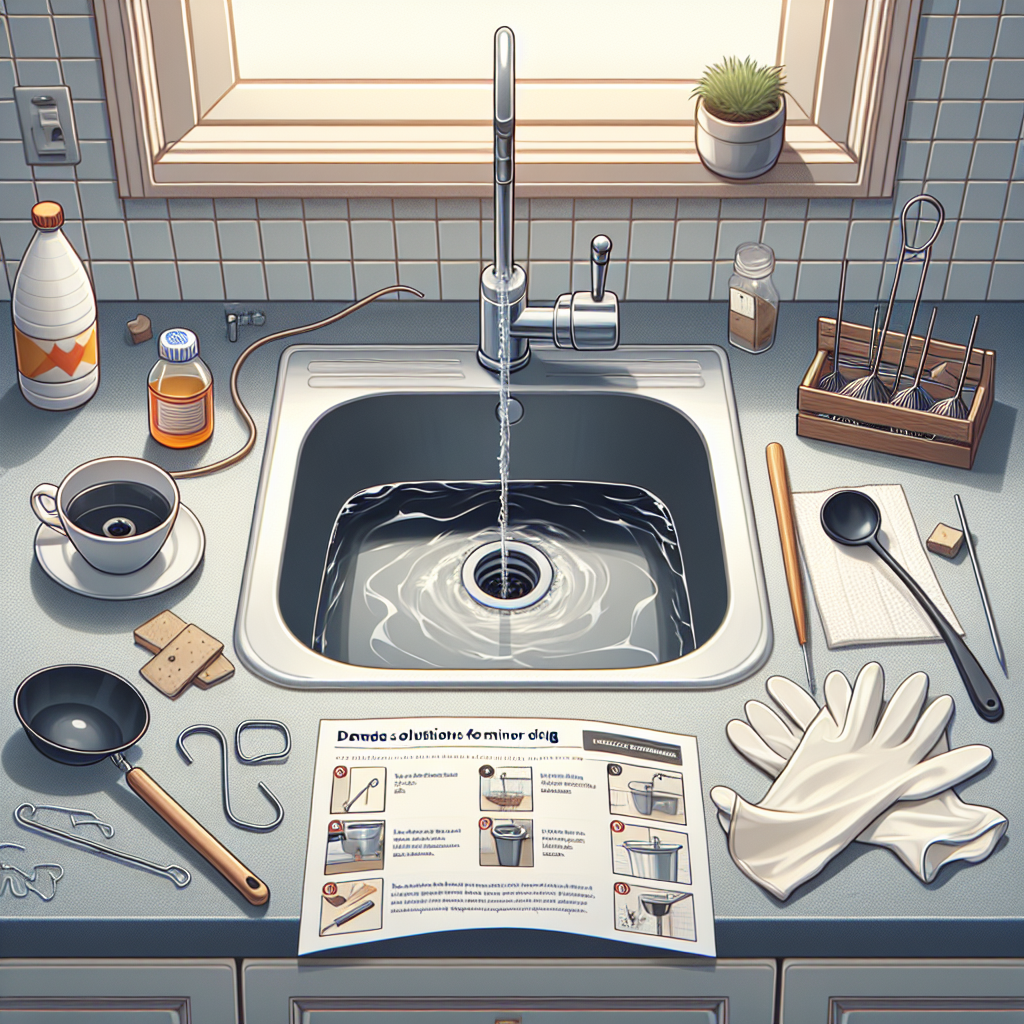Clogged drains can be a homeowner’s nightmare, often leading to frustration and potential plumbing bills. Fortunately, many minor drain clogs can be resolved quickly and affordably with simple DIY solutions. This article will guide you through effective methods to clear your drains while avoiding the need for a plumber. Let’s dive into the world of DIY drain cleaning!
Understanding the Causes of Minor Drain Clogs
Before we get into the solutions, it’s essential to understand what usually causes drain clogs. Common culprits include:
- Hair: Long strands can intertwine with soap and other debris, creating a stubborn blockage.
- Grease: Cooking oils and fats can solidify in pipes, especially when combined with food particles.
- Soap Scum: Homemade or commercial soaps can leave residues that build up over time.
- Foreign Objects: Small items accidentally dropped in sinks or toilets can cause unexpected clogs.
Recognizing these causes can help you employ preventative measures to avoid future issues.
DIY Solutions to Clear Minor Drain Clogs
1. Boiling Water
One of the simplest ways to tackle a minor clog is with boiling water. This method is especially effective for grease clogs.
How to Do It:
- Bring a kettle of water to a rolling boil.
- Carefully pour the boiling water down the drain in stages, allowing it to work between pours.
- Repeat as necessary until the clog is cleared.
2. Baking Soda and Vinegar
A timeless combination for household cleaning, baking soda and vinegar can be an effective solution for stubborn clogs.
How to Do It:
- Pour about 1 cup of baking soda down the clogged drain.
- Follow this with 1 cup of vinegar.
- Cover the drain with a plug or rag to keep the reaction down below. Wait for 30 minutes.
- Rinse with hot water to flush out debris.
3. A Plunger
Sometimes, the traditional tools work best. A plunger isn’t just for toilets—it can work wonders on sinks and tubs too!
How to Do It:
- Ensure there’s enough water in the basin to cover the plunger’s rubber cup.
- Place the plunger over the drain and push down gently, then pull up sharply.
- Repeat this action several times to dislodge the blockage.
4. A Drain Snake
If your clog is particularly stubborn, a drain snake can help clear it out. A drain snake is a flexible tool designed to reach deep into your pipes.
How to Do It:
- Insert the snake into the drain until you feel resistance.
- Keep pushing gently, twisting the snake as you go, to break up the clog.
- Pull the snake out, and run hot water through the drain to flush any loosened debris.
5. Remove and Clean the Trap
If the methods above haven’t resolved your clog, it may be time for a more hands-on approach: cleaning the trap.
How to Do It:
- Locate the P-trap under the sink (the curved section of pipe).
- Place a bucket underneath to catch any water.
- Loosen the nuts securing the trap and remove it from the pipe.
- Clean out any debris inside before reassembling.
Preventative Measures: Keeping Drains Clear
Now that you’ve successfully cleared a minor clog, it’s time to consider how to keep your drains in tip-top shape.
1. Regular Maintenance
Implement a regular maintenance schedule by cleaning your drains with baking soda and vinegar at least once a month to prevent debris accumulation.
2. Hair Catchers
For bathroom sinks and showers, using a hair catcher can significantly reduce the amount of hair that goes down the drain.
3. Avoid Pouring Grease
Instead of pouring grease down the drain, collect it in a container and dispose of it in the trash.
Conclusion
Dealing with minor drain clogs doesn’t have to be a dreaded chore. By employing these DIY solutions, you can save time, money, and the hassle of calling a plumber. Remember, regular maintenance and preventative measures will keep your drains flowing smoothly and ensure you won’t have to deal with overwhelming clogs in the future. Use these tips, and enjoy the peace of mind that comes with being a proactive homeowner!


